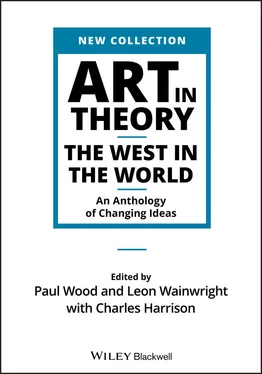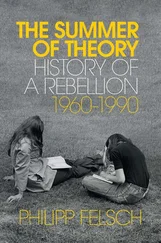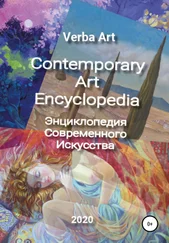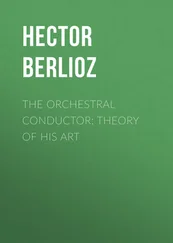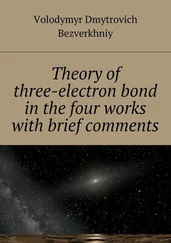Boab.
Kill him; this insolent Unknown shall fall,
And be the Victime to attone you all.
Ozmyn.
If he must die, not one of us will live,
That life he gave for us, for him we give….
Boab.
The word which I have giv’n, Ile not revoke;
If he be brave he’s ready for the stroke.
Almanz.
No man has more contempt than I, of breath;
But whence hast thou the right to give me death?
Obey’d as Soveraign by thy Subjects be,
But know, that I alone am King of me.
I am as free as Nature first made man
’Ere the base Laws of Servitude began
When wild in woods the noble Savage ran.
IC13 Aphra Behn ( c. 1640–89) from Oroonoko, or The Royal Slave
Oroonoko is a story which trades on the contemporary myth of the ‘noble savage’ (cf. IC12). The hero himself is slightly ambiguous, being a black African prince who receives a European education and is subsequently sold into slavery in America through the treachery of an English captain. There he leads a sort of double life, given the slave‐name ‘Caesar’ by his masters yet exempted from work and treated as a companion by the British because of his royal status. Eventually, however, he leads a slave revolt and, after again being betrayed, is captured, tortured and executed by the white colonists. Oroonoko is in many ways a feeble tale of doomed love and improbable coincidences, but Behn does manage to evoke simultaneously the dream and the nightmare of Europeans in the New World. The latter, in the shape of the slave revolt and Oroonoko/Caesar’s torture and death is too long and interwoven with narrative incident to admit of editing for the present anthology. However, the former, the dream‐myth of an Arcadian state of nature, occurs in condensed form at the beginning of the tale. Tellingly, it is a depiction not of the African slaves themselves, around whom the story revolves, but the indigenous inhabitants of Surinam, the ‘indians’, who are otherwise marginalized. Behn herself was briefly in Surinam in 1663–4, before returning to England and establishing a literary career during the Restoration. Oroonoko was first published in 1688. Our extract is taken from Aphra Behn: Oroonoko, The Rover and Other Works , edited by Janet Todd, Harmondsworth: Penguin Books, 1992, pp. 75–7.
Before I give you the story of this gallant slave, ’tis fit I tell you the manner of bringing them to these new colonies; for those they make use of there, are not natives of the place; for those [i.e. the native ‘indians’ as distinct from the imported African slaves] we live within perfect amity, without daring to command them; but on the contrary, caress them with all the brotherly and friendly affection in the world; trading with them for their fish, venison, buffaloes, skins, and little rarities; … for little parakeets, great parrots, macaws, and a thousand other birds and beasts of wonderful and surprising forms, shapes, and colours. For skins of prodigious snakes, of which there are some threescore yards in length; as is the skin of one that may be seen at His Majesty’s Antiquaries, where are also some rare [butter‐]flies, of amazing forms and colours, presented to them by myself, some as big as my fist, some less; and all of various excellencies, such as art cannot imitate. Then we trade for feathers, which they order into all shapes, make themselves little short habits of them, and glorious wreaths for their heads, necks, arms and legs, whose tinctures are inconceivable. I had a set of these presented to me, and I gave them to the King’s Theatre, and it was the dress of the Indian Queen , 1infinitely admired by persons of quality, and were inimitable. Besides these, a thousand little knacks, and rarities in Nature, and some of art; as their baskets, weapons, aprons, etc. We dealt with them with beads of all colours, knives, axes, pins and needles; which they used only as tools to drill holes with in their ears, noses and lips, where they hang a great many little things; as long beads, bits of tin, brass, or silver, beat thin; and any shining trinket. The beads they weave into aprons about a quarter of an ell long, and of the same breadth; working them very prettily in flowers of several colours of beads; which apron they wear just before them, as Adam and Eve did the fig leaves; the men wearing a long strip of linen, which they deal with us for. They thread these beads also on long cotton threads, and make girdles to tie their aprons to, which come twenty times, or more, about the waist; and then cross, like a shoulder‐belt, both ways, and round their necks, arms and legs. This adornment, with their long black hair, and the face painted in little specks or flowers here and there, makes them a wonderful figure to behold. Some of the beauties which indeed are finely shaped, as almost all are, and who have pretty features, are very charming and novel; for they have all that is called beauty, except the colour, which is a reddish yellow; or after a new oiling, which they often use to themselves, they are of the colour of a new brick, but smooth, soft and sleek. They are extreme modest and bashful, very shy, and nice of being touched. And though they are all thus naked, if one lives for ever among them, there is not to be seen an indecent action, or glance; and being continually used to see one another so unadorned, so like our first parents before the Fall, it seems as if they had no wishes; there being nothing to heighten curiosity, but all you can see, you see at once, and every moment see; and where there is no novelty, there can be no curiosity. […] And these people represented to me an absolute idea of the first state of innocence, before man knew how to sin; and ’tis most evident and plain, that simple Nature is the most harmless, inoffensive and virtuous mistress. ’Tis she alone, if she were permitted, that better instructs the world than all the inventions of man; religion would here but destroy that tranquillity they possess by ignorance, and laws would but teach them to know offence, of which now they have no notion. […] They have a native justice, which knows no fraud; and they understand no vice, or cunning, but when they are taught by the white men.
1 The Indian Queen was a play co‐authored by Dryden, first performed in London in 1664.
IC14 Charles Perrault (1628–1703) from Parallel of the Ancients and Moderns
Perrault’s text is concerned with the important seventeenth‐century debate on the relative eminence of the Ancients and the Moderns, in science, art and philosophy. Because of its centrality to seventeenth‐century art theory, an extensive selection can be found in Art in Theory 1648–1815 IA7 (pp. 53–62). However, a short passage also bears upon the concerns of the present anthology. Almost in passing it gives early articulation to a view of the art of China (and, by implication, anywhere else outside the orbit of the academic tradition) which became the European default position for at least the next two hundred years. Perrault’s protagonist in his staged debate believes that art has progressed. The sixteenth‐century High Renaissance art of Raphael and Titian sets the standard. He acknowledges that ‘some years before’, a skilful art had existed. Because of his emphasis on observed detail, it is probable that he is referring to Northern Renaissance masters such as Van Eyck in the late fifteenth century. His clinching point is that the Chinese too have such an art. But whereas European art has progressed, Chinese art has not. It lacks the wider attributes of the academic canon, particularly shading (‘chiaroscuro’) and perspective, to give the illusion of three‐dimensions on a flat surface and a coherent unified composition building to a visual climax. At a stroke, the position is established that other arts are not merely different from but deficient with respect to post‐Renaissance Western art. The passage comes from the ‘Second Dialogue on the Three Visual Arts’ of Perrault’s Parallel of the Ancients and Moderns , published in 1688. It can be found in Art in Theory 1648–1815 , IA7, p. 57. The text was translated for Art in Theory by Chris Miller.
Читать дальше
